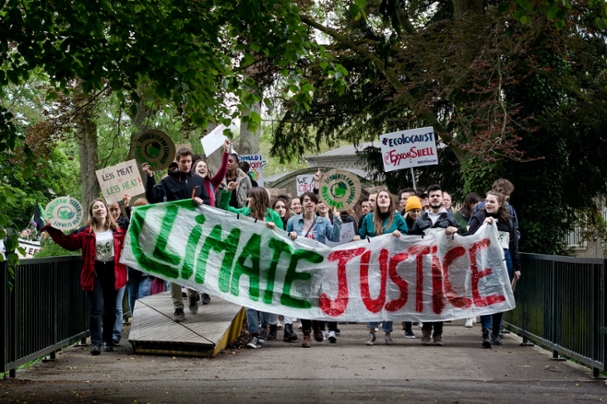What is Climate Justice
Author: UNB Sustainability
Posted on Mar 1, 2022
Category: Questions
Climate justice is increasingly being demanded around the world. To grasp the meaning of climate justice, it is important to first understand the social complexities of climate change. As we know, climate change as previously defined in the Green Review refers to the long-term shift in average weather conditions. While there are several causes of climate change, recent IPCC reports have recognized anthropogenic activity as the leading cause. However, there are inequalities within the causes and impacts across the world.

Emissions Inequality
According to Oxfam, the richest 1% of the world’s population produce more than twice as much carbon emissions as the poorest 10%. Such inequality is a consequence of more developed nations continually exploiting fossil fuels for rapid economic growth since the Industrial Revolution. In addition to the environmental impacts, this inequality limits the socio-economic development possibilities for developing countries. Therefore, climate policy must focus on limiting high emissions in more developed countries as well as create investment strategies in less developed countries to help tackle the climate crisis.
Impacts Inequality
Despite producing the least GHG emissions, less developed countries, marginalized communities, and small island nations are the most vulnerable to the impacts of climate change. There is a significantly lower level of resilience in developed countries to extreme climate events due to various factors. Some of which include geographical location, climate conditions, financial constraints, and high dependence on natural resources. As the frequency, duration and intensity of weather events continue, the livelihoods of these communities will remain at risk. For example, small island nation populations may be displaced by the projected sea level rise.
Social Justice
Climate change has both direct and indirect effects on society, but it is important to recognize that typically low-income, less developed countries and small island nations are more vulnerable. This is because climate change is more than an environmental issue, it exacerbates existing social inequalities and addresses the challenges certain groups face when attempting to mitigate or adapt to the crisis. The level of severity may vary but the intersecting social issues include lower health, safety, and food security. Additionally, climate change drives house displacement, conflict, and unemployment within these groups. As a result, climate change may increase the gap between the poor and rich as global poverty rises making it more difficult to achieve social justice.
How can we achieve Climate Justice?
Climate justice can be seen as the product of climate change and social justice. To simply put, it is ensuring collectively and individually we can prepare for, respond to, and recover from climate change impacts – and the policies to mitigate or adapt to them - by considering existing vulnerabilities, resources, and capabilities. It can be achieved by preventing further climate change and investing in vulnerable communities. Collectively, we need to use our voices to change the political climate, encourage investment in nationwide resilience and promote recovery programs for those most affected.
Sources
https://www.jrf.org.uk/report/climate-change-and-social-justice-evidence-review